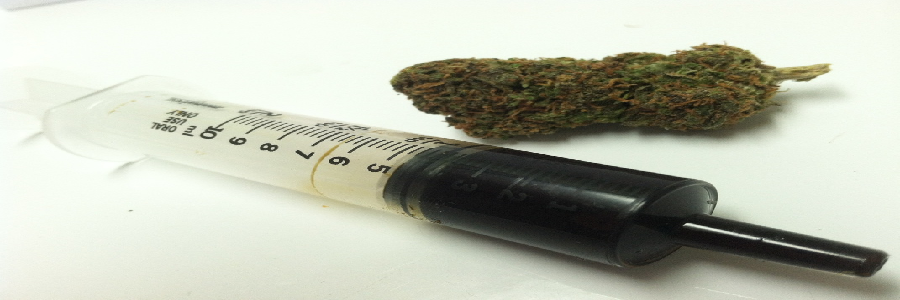Buy One Get One FREE on Everything. Use Code BOGO1
![]()
![]()


How can you use CBD for pain management successfully?
Cannabidiol (CBD) oil is often recommended for chronic pain relief. And why not? It:
Found in cannabis, CBD is a type of cannabinoid that binds itself with the endogenous cannabinoid system (ECS) of the body. It does not cause a ‘high’ like THC (another cannabinoid found in the plant) but offers a lot of other health benefits.
CBD can either come from the marijuana plant or the hemp plant. According to the US 2018 Farm Bill, marijuana is the type of cannabis plant which has more than 0.3% THC. In reality, it can contain as much as 30% THC.
The hemp plant is also a cannabis plant but it has less than 0.3% THC. 100% pure CBD oil does not contain THC at all. The hemp-derived CBD oil is legal while marijuana-derived CBD oil might be illegal in some places. The latter can be used for medical purposes in countries like Australia and Canada. However, you will need a doctor’s prescription to buy it.
Hemp-derived CBD oil is often referred to as CBD hemp oil.
CBD shows great promise in pain management. An online survey on the patients and staff across seven pain clinics in Southern California found that 63% of patients had tried a CBD product. Among the users, about 57% said that the CBD products helped their condition.
About 57% of CBD users stated that CBD has helped in reducing their pain medication. About 45% of patients found that their dependency on opioids for pain relief has reduced due to CBD products.
The participants included patients with a variety of conditions, including:
Please note that this survey received a grant from a pharmaceutical company. Hence, more scientific evidence is needed to back up these claims.
Recently, the US Food & Drug Administration (FDA) has approved a CBD-based medicine called Epidiolex. It is used in treating two rare and severe forms of epilepsy called:
This oral solution is the first drug to use the purified form of CBD to treat epilepsy.
It does not mean that CBD pain medications are also approved by the FDA. In fact, CBD industry is largely unregulated. The purity and dosage of the CBD pain products available in the market vary widely.


Kevin F. Boehnke, Ph.D.; and Daniel J. Clauw, MD co-wrote a commentary on ‘Cannabinoid Dosing for Chronic Pain Management’. These pain researchers believed that THC in cannabis causes:
CBD is a relatively benign cannabinoid which plays a crucial role in chronic pain management. They found that CBD has:
CBD has been found to be effective in neuropathic and centralized pain. More evidence is needed to provide the efficacy of CBD for pain in inflammatory or nociceptive conditions.
Nociceptive pain is localized. Pain due to osteoarthritis, autoimmune disorders, and cancer pain fall under this category.
A 2008 review also concluded that CBD is effective in difficult-to-treat pain management. It also stated that CBD pain medication does not have side effects. This study claimed that CBD was most effective in treating pain related to multiple sclerosis (MS).
Yet another study was published in the Journal of Experimental Medicine. It suggested that CBD reduces pain and inflammation in chronic patients. The researchers also noted that subjects do not build up a tolerance to CBD effects. It means that they won’t need to increase their dosage from time-to-time.


Clinical research on this topic is still going on. Current scientific evidence suggests that CBD pain medication might work well on arthritic pain. A study on rats studied the effects of the topical application of CBD gel on joints. Researchers found that applying the gel on rats’ affected joints over a period of four days reduced inflammation and pain.
A study on humans also suggested that CBD treatment is effective in managing pain in rheumatoid arthritis patients. The effective dose was found to be 20 or 30 mg daily.
Multiple Sclerosis (MS) is an autoimmune disease. It affects:
Its most common symptom is muscle spasms. Some people are in constant pain due to the severity of these spasms.
It has been found that short-term use of oral cannabinoids can improve the symptoms of spasticity in MS patients.
Spasticity causes certain muscles to contract continuously. It can cause stiffness or tightness of the muscles and interfere with:
of a person.


Studies in mice have shown that the use of CBD oil kills cancer cells and reduces the size of tumors. However, studies on humans revolve around the use of CBD oil to manage cancer-related pain and the side-effects of chemotherapy.
The National Cancer Institute (NCI) recommends the use of CBD to:
It confirms that this cannabinoid does not cause the ‘high’ like delta-9-THC.
Medical marijuana laws vary from state to state in the US. But the use of hemp-derived CBD oil is now legal all over the US under the 2018 Farm Bill.
Another NCI study tested the effects of CBD oil extracts sprayed into the mouth to treat solid tumors. The results mentioned that the CBD oil offered better pain management in cancer patients when it is used in conjunction with opioids.


The FDA does not regulate most of the CBD products. So, one should be cautious while using them. It is a good idea to discuss the right dosage of CBD for pain management with a doctor first.
CBD can be taken in different ways. Each delivery method can affect the body in a different way. Similarly, the amount of CBD you use and the frequency with which you use it also determines how it will affect your body.
CBD can target over 65 different receptors in the body. If you are buying CBD for the first time, it might be a good idea to maintain a progress card. Mention how much CBD you take and how you are taking it. Rate the symptoms and note how effective a CBD product is to your condition over a period of time.
The CBD format you choose depends on the condition you are trying to treat:
Experts recommend that one should start using a CBD product at a very low dose. They must observe its effects. Then, gradually increase it to achieve the desired results.
To treat chronic pain, you can start with an oral dose of 2.5 mg once a day and increase it to 20 mg per day in the course of a few weeks. Anxiety and sleep issues may call for a higher CBD dose ranging from 40 mg to 160 mg.
One cannot recommend a daily allowance of CBD that works for everyone. The right dose for someone depends on the person’s characteristics, such as:
among many other things.
Most people recommend that one can safely take about 25 mg of CBD twice daily. You may increase the dose by another 25 mg after every 3-4 weeks until you experience relief. The journal can help in fine-tuning your dosage according to your body and fitness level.
Even if you are looking for quick pain relief, you should allow the CBD enough time to reach its peak and show its effects before taking more of it. In the case of vaporizers, it is advisable to wait for at least an hour or two to feel the full effects of CBD. In the case of oral CBD products, it is advisable to wait for at least six to seven hours.


CBD is not addictive like opioids. Hence, its withdrawal symptoms are rare. In some reviews, consumers mentioned that stopping the use of CBD oils or CBD edibles did result in the return of the symptoms they kept in check (such as pain or anxiety).
Some minor side-effects of CBD oil mentioned in patient reviews are:
The CYP450 enzyme is found in the liver. It is used in metabolizing 60% of the pharmaceutical drugs available in the market. So, if you are taking medicines (such as steroids or antibiotics), you might want to determine if CBD can interfere with their processing times first. Something as benign as grapefruit juice might also inhibit the action of such medicines. So, it is advisable to discuss your CBD use with a doctor if you are under treatment for a prevailing health condition.
The side-effects of CBD mentioned above represent the worst case scenarios. They are not typical to CBD use. No significant risks have come to light on using CBD products.
You cannot overdose on CBD. Many studies have used CBD dosage as high as 1500 mg per day, and it was well-tolerated by humans.
NCI does warn pregnant women and breastfeeding mothers against using CBD-based products as it can affect the development of the brain of the babies.
The American Academy of Pediatrics expressed concern about the use of cannabis and cannabinoids in children. It expressed concerns that they might affect the development of the brain in children. The study does not focus only on the effects of cannabidiol though.
THC (Tetrahydrocannabinol) and CBD (cannabidiol) are both cannabinoids. Cannabis has more than 120 cannabinoids. Many other plants contain cannabinoids too, including:
Each cannabinoid affects the body differently. THC activates different receptors than CBD. That’s why the CBD does not produce psychoactive effects like THC.
THC activates the endocannabinoid receptors in the body that signal the brain to release dopamine – which produces the feeling of pleasure. CBD is a different compound which affects the body differently.
Cannabidiol is also found in:
A 2015 study suggested that CBD does not bind itself to the ECS receptors. Instead, it activates or inhibits the functioning of other compounds in the body. For example,
The presence of CBD does not allow the body to absorb ‘anandamide’ and increases its level in the bloodstream. This substance regulates pain. Its presence in blood for a longer period numbs the sensation of pain in a person.
Cannabidiol also reduces neuroinflammation as well as promotes neuroplasticity. Thus, it is useful in treating ailments related to brain and nervous system, like:
Since CBD does not affect one’s control over one’s mind, it is considered completely safe. On the other hand, marijuana abuse is so popular because it has THC which gives people a ‘high’. People smoke weed or pot to get ‘high’ which affects their performance in school or office.


A clinical review published in the journal Cannabis and Cannabinoid Research claimed that the Chinese used cannabis to treat a variety of conditions long back in 2900 B.C. Some of the conditions that were treating through cannabis back then included:
As we discussed earlier, CBD oil eases chronic pain and relieves inflammation. It also promotes sound sleep. Patients with chronic pain often find it difficult to sleep well. Hence, this property of CBD oil makes it desirable for those in pain.
Some of the reasons why people prefer CBD pain medication over regular pain medications are:
Much of the evidence that advocates CBD for pain is based on animal-based research. Clinical trials on humans are still underway.
Oral CBD products often have poor bioavailability. It means that the proportion of CBD pain medication is quite low when it is taken orally. Applying CBD balm or salve on a particular area can help with controlling pain in that specific area without much of it being absorbed into the bloodstream.
In a 2017 study, researchers observed that treatment with topical CBD alleviated the development of joint pain in rats with osteoarthritis. Another study found that applying CBD gel on joints reduced the swelling, pain, and inflammation in joints of rats with arthritis.
Pediatric Dermatology published a report in 2018 where scientists noted that using CBD oil, cream, and spray topically in children with epidermolysis bullosa was quite helpful. Epidermolysis bullosa is a rare and painful skin disease in which blisters are formed on the skin. Using CBD products helped the children by:
One of the three cases reported that CBD helped in weaning the child off the analgesic pain medication completely.
Effectiveness of a CBD product in pain management depends on its:
Before you order a CBD product, it is highly recommended to read its reviews and talk to the customer care executive in detail about everything you need to know.
![]()
![]()
![]()
![]()
![]()
![]()
We The People Hemp was founded in 2018 to bring quality CBD products and information to the global marketplace.
![]()
![]()